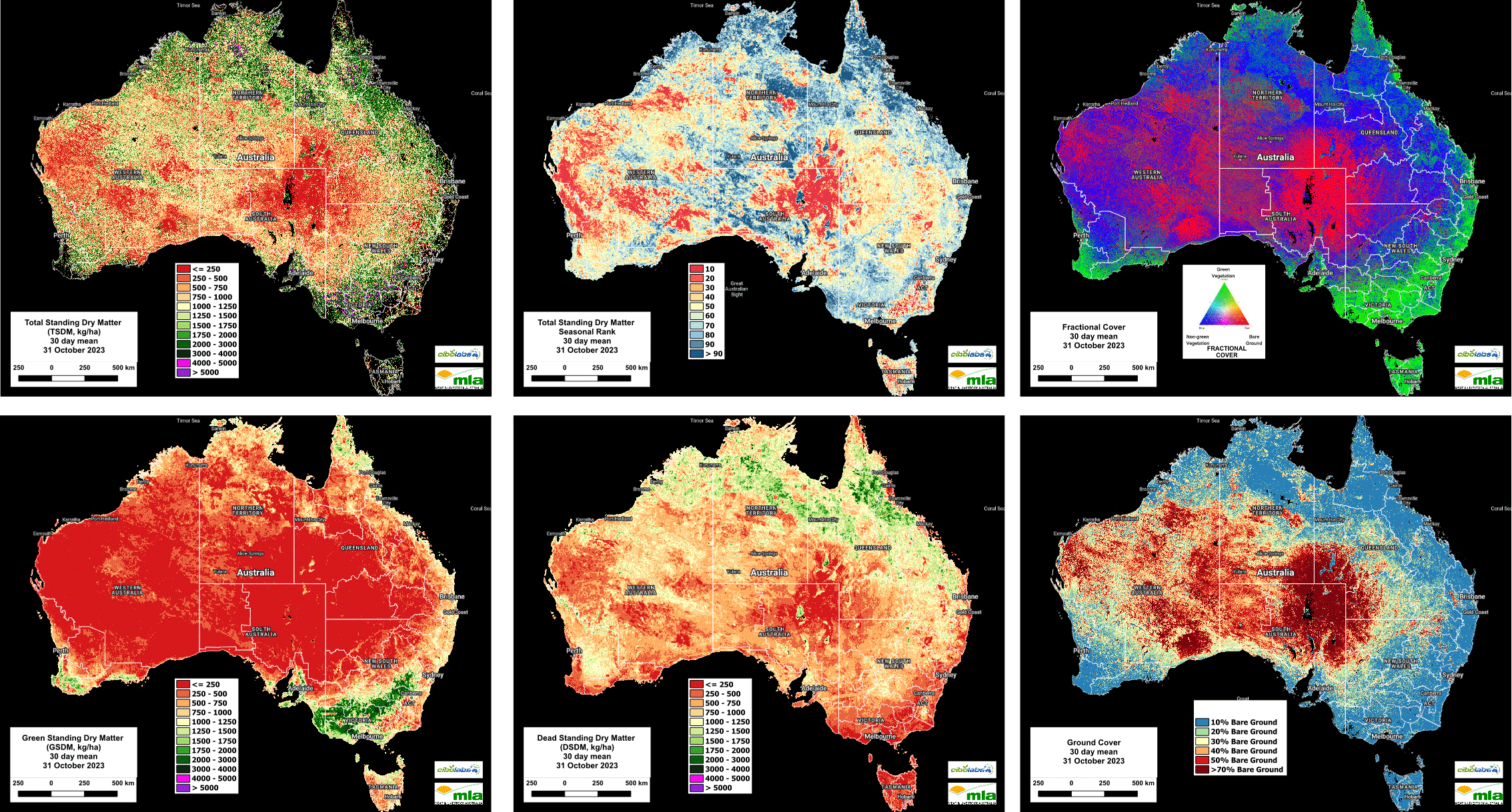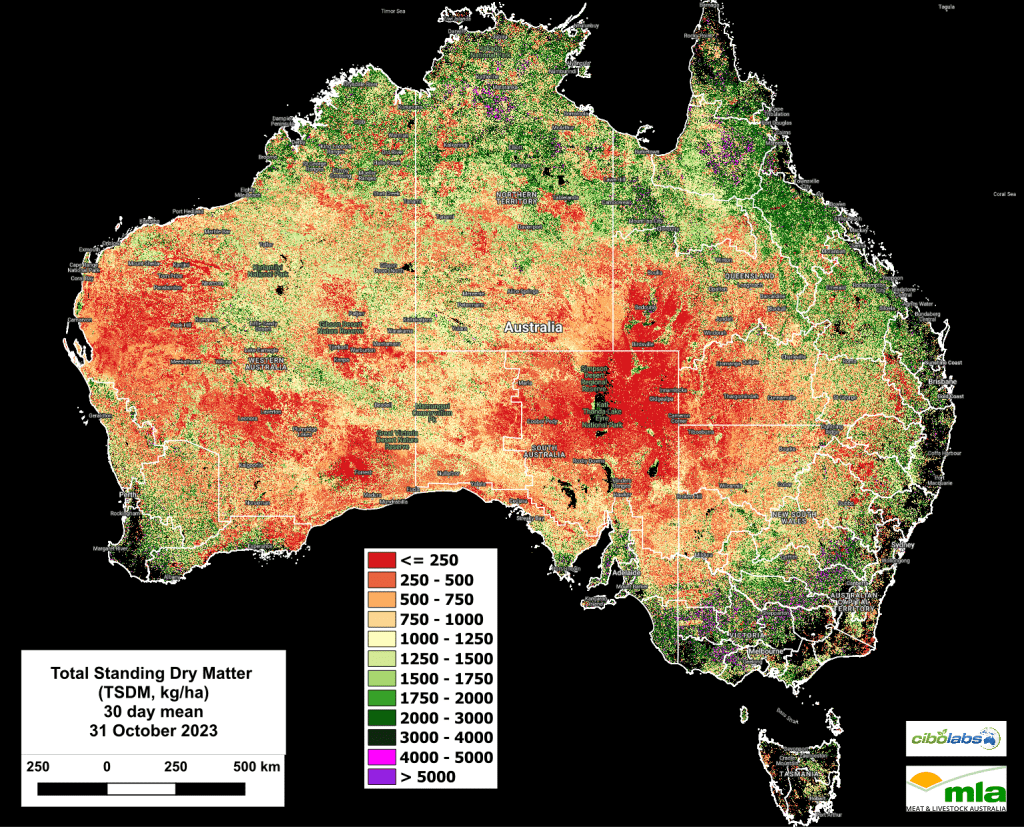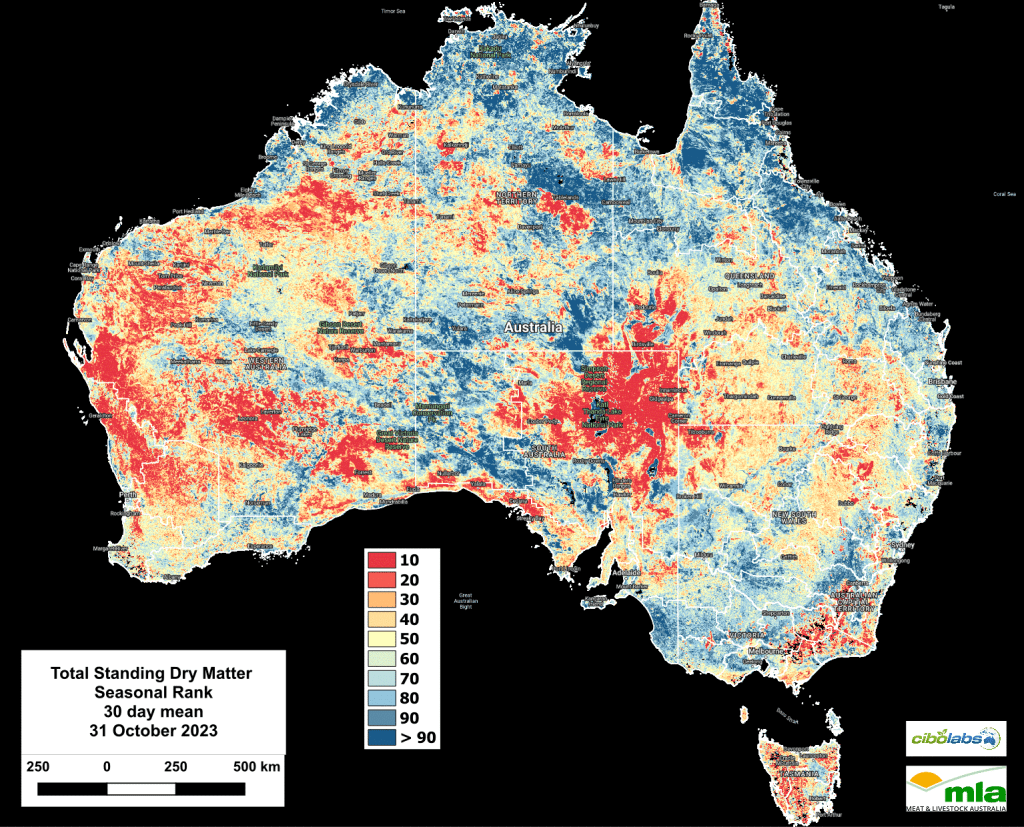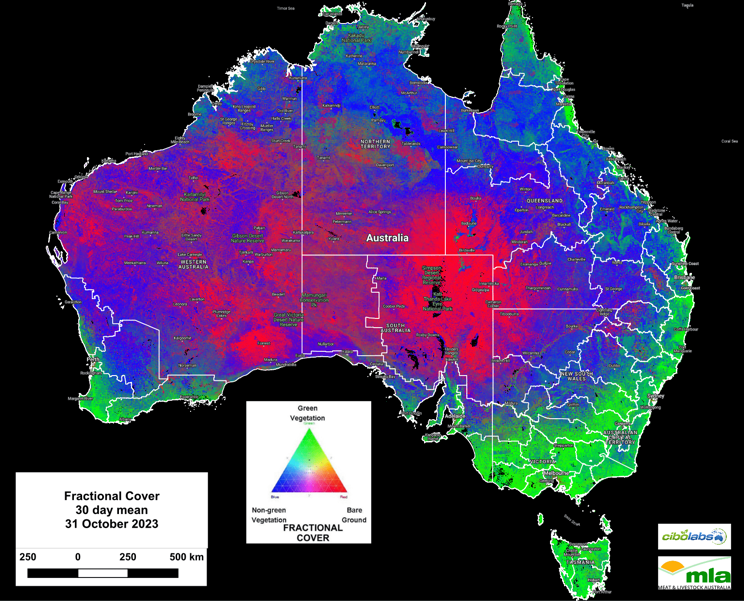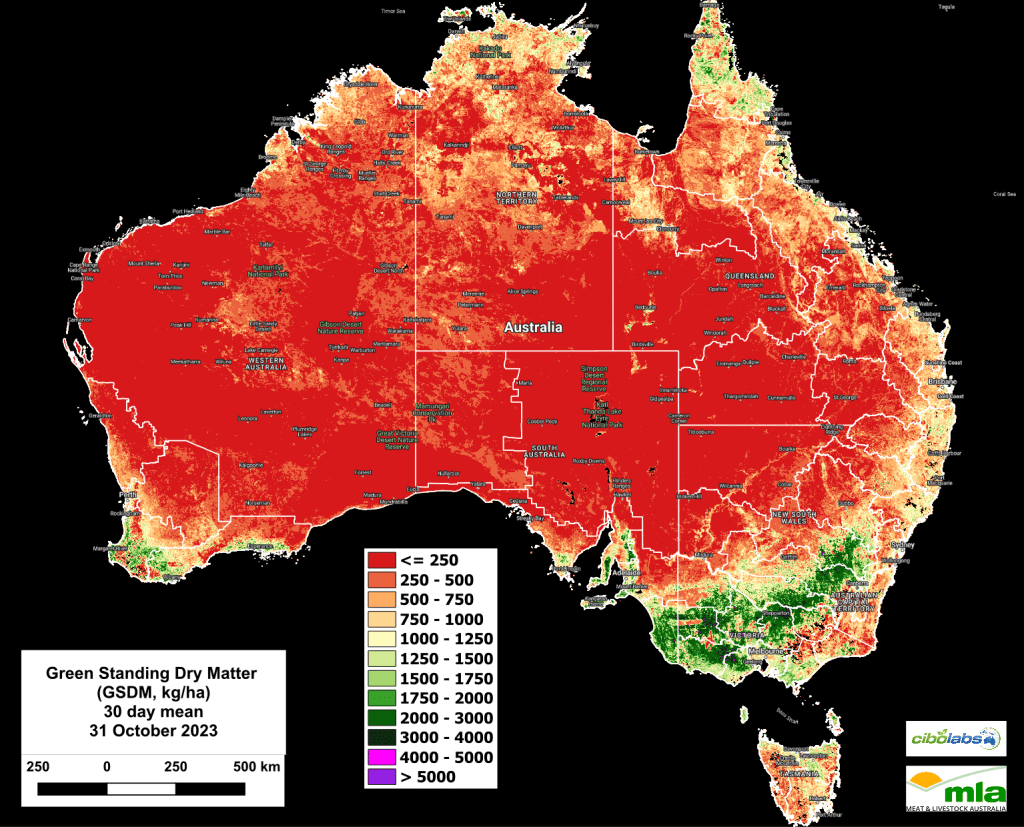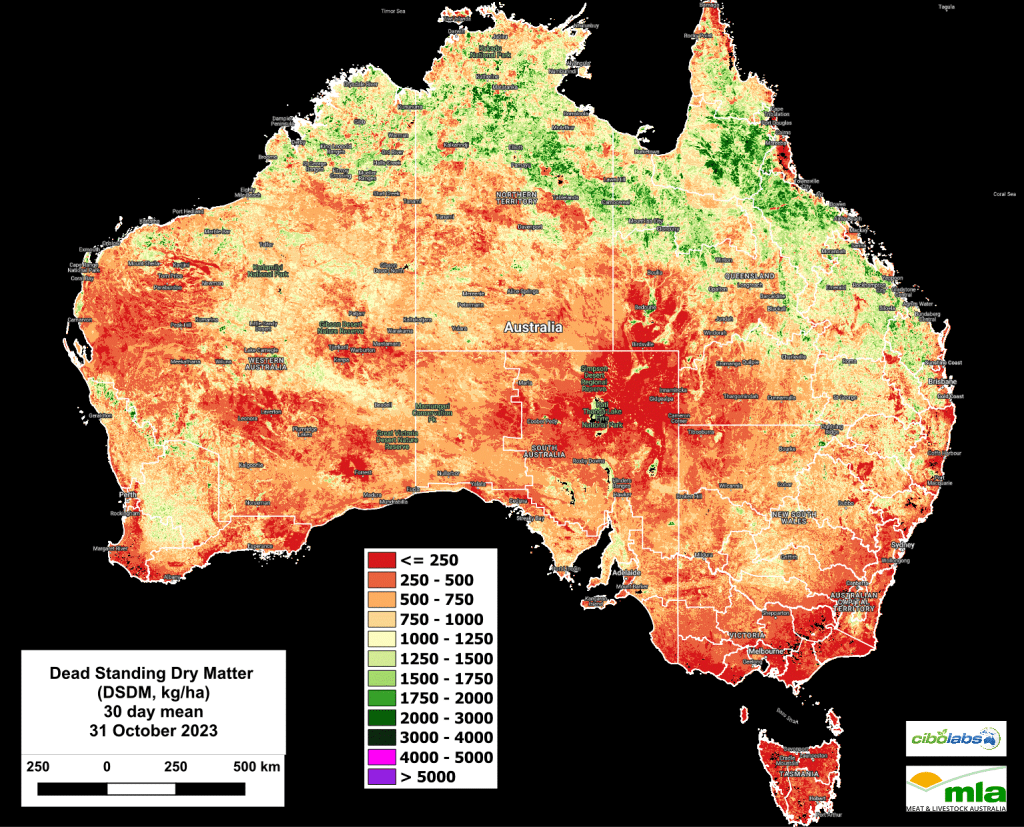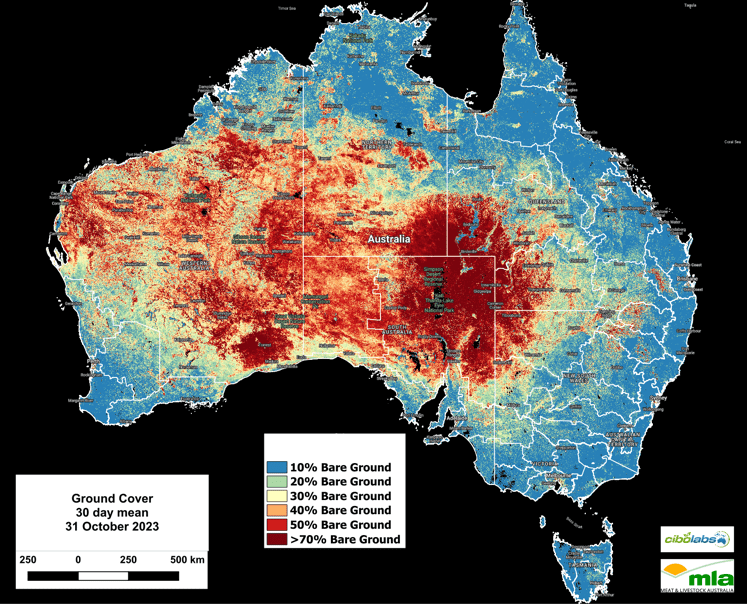Rainfall deficiencies in the three months since August 2023 have been significant for much of the continent.
The Bureau of Meteorology reports serious rainfall deficiencies recorded in the Northern Territory, South Australia, southwest & southern coast and much of eastern Australia.
These deficits along with warmer than average temperatures, have significantly impacted on levels of Total Standing Dry Matter / Ha in all states.
Total Standing Dry Matter
The national average amount of Total Standing Dry Matter is now below 1,250Kg DM/Ha.

Imagery and analysis provided by CiboLabs
While there are areas of Victoria and north Qld with totals in excess of 3,000kg DM/Ha, these are small areas that are rapidly declining in area (Figure 1).
Seasonal Comparison Total Standing Dry Matter
The areas of the continent now considered to be below and well below average for the seasonal levels of Total Standing Dry Matter have expanded across NSW, South Australia, Western Australia, Tasmania, Queensland, and the Northern Territory.
Areas that were slightly below average in the previous October summary have declined further with a significant increase the in area considered to be within the 30% and below decile (Figure 2).
Fractional Cover (Growth)
Pasture Biomass Growth events (as indicated by Fractional Cover – Image 3) remain restricted to the coastal margins and south-eastern parts of the continent and Tasmania where some rainfall has been recorded.
Growth has slowed in southeast South Australia since the 21st of October (the date of the last satellite update).
Green Total Standing Dry Matter
With the exception of the southwest slopes of NSW and southwestern Victoria, the levels of Green Standing Dry Matter across the continent fall within levels of 750kg DM/Ha or less. (Image 4).
This will have ongoing implications for livestock managers who are calculating feed budgets on levels of green material in diets.
In most areas these levels are well below the benchmarks for all classes of livestock, and as a consequence, overall daily intake for stock from pasture is likely to be significantly below what is required for maintenance or production.
Dead Standing Dry Matter
The impact of warmer weather and associated windy conditions have contributed to a further reduction in the amounts of Dead Standing Dry Matter (Image 5) which many producers had been reliant upon for grazing with appropriate supplementation.
The detachment of this material and subsequent loss is reflected in further areas recording levels of Dead Standing Material below 750kg DM / ha.
Monthly Ground Cover levels
National Ground Cover levels (30 day rolling average – Image 6) are now beginning to reflect the loss of dead standing material and I some regions the impact of bushfire.
Western Australia and the western regions of South Australia have seen an increase in area that has 70% or greater bare ground, while in the Northern Territory, western Queensland and western NSW, the area of country with 30 – 40% bare ground has expanded.
It is important for users to note that these national images can be refined to provide more detail on a regional basis using the Cibo Labs Regional Comparison. This can be used to focus on regional level data which may show the impact of localised weather or fire events. A further level of detail for individual properties is available for users who have created an Australian Feedbase Monitor account, which can be accessed both through the MyMLA portal or through the Cibo Labs website.
The Cibo Labs National Comparison can be used to freely access these layers (https://www.cibolabs.com.au/products/national-comparsion/) to view the most recent images from a national, state or catchment level.
This tool can complement the Australian Feedbase Monitor which can also be created within the Cibo Labs Web Site www.cibolabs.com.au

